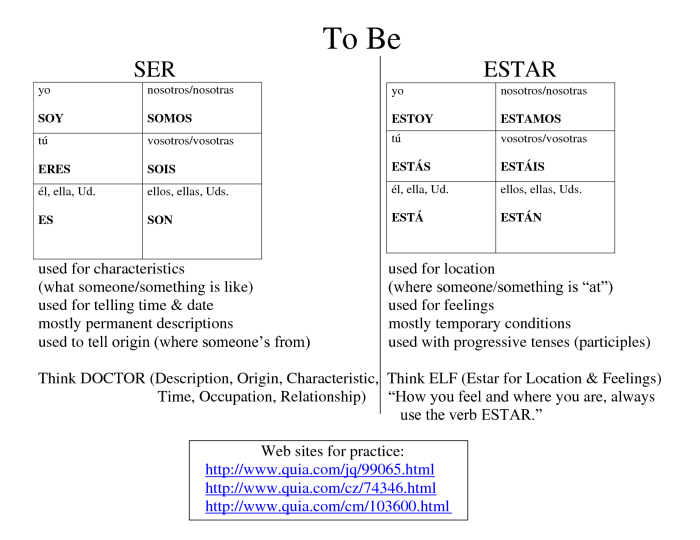The gramatica the verb estar worksheet answers provide a comprehensive overview of the verb estar in Spanish. This guide will explain the basic conjugations of the verb estar in the present tense, provide examples of how to use the verb estar to describe locations, and share tips for using the verb estar correctly in different contexts.
This guide is designed to help students practice the conjugation of the verb estar and use it correctly in different contexts. The exercises are organized in order of difficulty, starting with basic conjugations and progressing to more complex usage.
Grammar of the Verb Estar

The verb estaris used to describe locations, states of being, and temporary conditions. It is an irregular verb, and its present tense conjugations are as follows:
- yo estoy
- tú estás
- él/ella/usted está
- nosotros estamos
- vosotros estáis
- ellos/ellas/ustedes están
To use estarto describe locations, simply follow the subject with the preposition enand the location.
- Yo estoy en la casa.(I am in the house.)
- Tú estás en el parque.(You are in the park.)
- Ellos están en la escuela.(They are at school.)
Estarcan also be used to describe states of being, such as being happy, sad, or tired.
- Estoy feliz.(I am happy.)
- Estás triste.(You are sad.)
- Están cansados.(They are tired.)
Finally, estarcan be used to describe temporary conditions, such as being sick or hungry.
- Estoy enfermo.(I am sick.)
- Estás hambriento.(You are hungry.)
- Están sedientos.(They are thirsty.)
Worksheet Exercises

Exercise 1: Conjugate the verb estarin the present tense.
- Yo _______ en la casa.
- Tú _______ en el parque.
- Él _______ en la escuela.
- Nosotros _______ en la biblioteca.
- Vosotros _______ en el cine.
- Ellos _______ en el restaurante.
Exercise 2: Use the verb estarto describe locations.
- The students are in the classroom.
- The teacher is in the office.
- The car is in the garage.
- The dog is in the backyard.
- The cat is on the bed.
Exercise 3: Use the verb estarto describe states of being.
- I am happy.
- You are sad.
- He is tired.
- She is hungry.
- We are thirsty.
Exercise 4: Use the verb estarto describe temporary conditions.
- I am sick.
- You are injured.
- He is lost.
- She is cold.
- We are late.
Answer Key: Gramatica The Verb Estar Worksheet Answers
-*Exercise 1
- estoy
- estás
- está
- estamos
- estáis
- están
Exercise 2:
- Los estudiantes están en el aula.
- El profesor está en la oficina.
- El coche está en el garaje.
- El perro está en el patio trasero.
- El gato está en la cama.
Exercise 3:
- Estoy feliz.
- Estás triste.
- Está cansado.
- Tiene hambre.
- Tenemos sed.
Exercise 4:
- Estoy enfermo.
- Estás herido.
- Está perdido.
- Tiene frío.
- Llegamos tarde.
Additional Resources
FAQs
What is the verb estar?
The verb estar is a Spanish verb that means “to be.” It is used to describe the location or condition of something.
How do I conjugate the verb estar in the present tense?
The verb estar is conjugated in the present tense as follows:
- yo estoy
- tú estás
- él/ella/usted está
- nosotros/nosotras estamos
- vosotros/vosotras estáis
- ellos/ellas/ustedes están
How do I use the verb estar to describe locations?
The verb estar is used to describe the location of something. For example, you can say “Estoy en la casa” to say “I am in the house.”